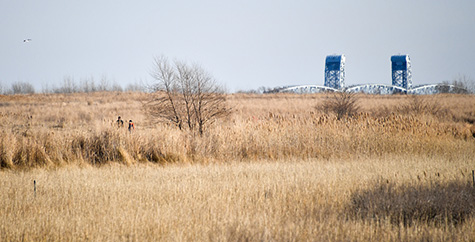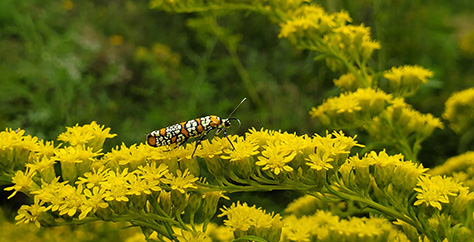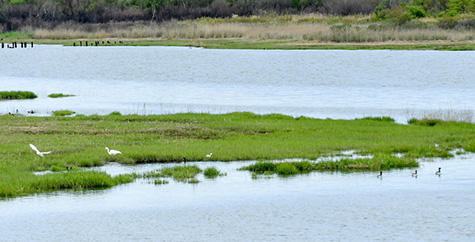Exploring New York City's Grasslands: White Island
While Marine Park in Brooklyn is perhaps best known for its salt marshes and sports fields, it is also home to White Island, 75 acres of open-space grassland rarely open to the public and only accessible by boat! Take a peek inside and learn how the island became a thriving haven for wildlife in Brooklyn.

Transforming a landfill into grassland for vulnerable birds and butterflies
Before it became the beautiful nature sanctuary we know today, White Island and the surrounding areas in Marine Park were used for sanitary landfilling and disposal of non-hazardous municipal waste in the middle decades of the 20th century. When nearby development permanently destroyed the grassland habitat, which supported a population of rare and threatened Henslow's sparrows, NYC Parks undertook a project to restore White Island and recreate habitat for the Henslow’s sparrow and other grassland birds.
The project's goal was to replace the harmful common reed, Phragmites, that dominated the landscape with grass species that could provide better habitat for birds like the Henslow’s sparrow, upland sandpiper, grasshopper sparrow, horned lark, and bobolink.
To do so, Parks scientists selected grass seed mixes to mimic the diversity of grass species found in tall grass meadows, short grass meadows, and maritime grasslands. These mixes included seeds for grasses like Switchgrass, Broomsedge, and Big bluestem, which has distinctive blue-green stems and a fibrous root system that can penetrate the soil as deep as 10 feet! Then, between January 2012 and October 2013, Parks installed more than 150,000 cubic yards of sand across the island so that these new grasses could take root in material that was free of harmful plant species.
As the new grasses grew, the island became an extremely valuable habitat for different types of ground-nesting birds, including northern harriers and sparrows. Today, many of these birds are varieties of sparrows, including savannah sparrow, field sparrow, and grasshopper sparrow, that prefer open landscapes like grasslands. They will move elsewhere if an area grows too thick with trees.
The seed mixes introduced by our scientists also included ecologically important wildflowers, like Butterfly milkweed. Milkweeds are host plants on which female monarch butterflies lay their eggs and the sole food source for monarch butterfly caterpillars. Growing milkweed is especially important since monarch butterflies face habitat loss due to climate change, development, and the growing presence of harmful plant species in their habitat. In addition to butterfly milkweed, our pollinators also benefit from the island's flourishing Seaside goldenrod, a perennial wildflower that often hosts ecologically valuable caterpillars that feed breeding and migrating birds.
If you get a chance to visit the island's vast grassland, look up -- you might just see a northern harrier gliding low and slow listening for rodents below. Unlike many birds of prey, or raptors, harriers make their nests on the ground among the clumps of vegetation found in grasslands. These birds are classified as Threatened by New York State, making the continued protection of their grassland habitat even more important.
Caring for White Island and NYC's Grasslands
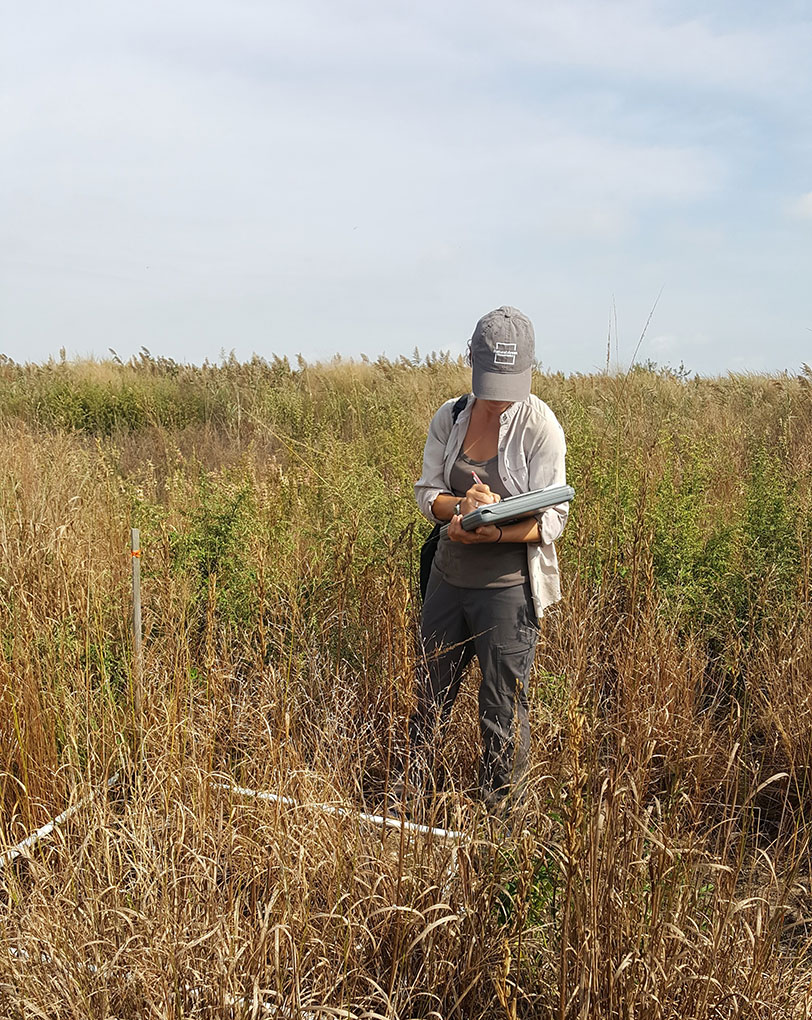
NYC Parks continues to preserve and monitor the restored areas to assess vegetative cover and wildlife presence and to inform future grassland restoration and management efforts across New York City’s natural areas. We host volunteer stewardship events in grasslands, wetlands, and forests that include removing garbage from the land and waterways, managing harmful plant species, planting native plants, and more.
To learn more about the native plant species NYC Parks uses in restoration projects like this, check out the Native Species Planting Guide!
How You Can Help
If you’d like to help us care for Marine Park, there are many ways to get involved! You can volunteer with NYC Parks or the Salt Marsh Alliance. When you visit, be sure to carry your trash out with you, stay on the official trails, and treat all wildlife and your fellow park-goers with respect.
Visiting White Island
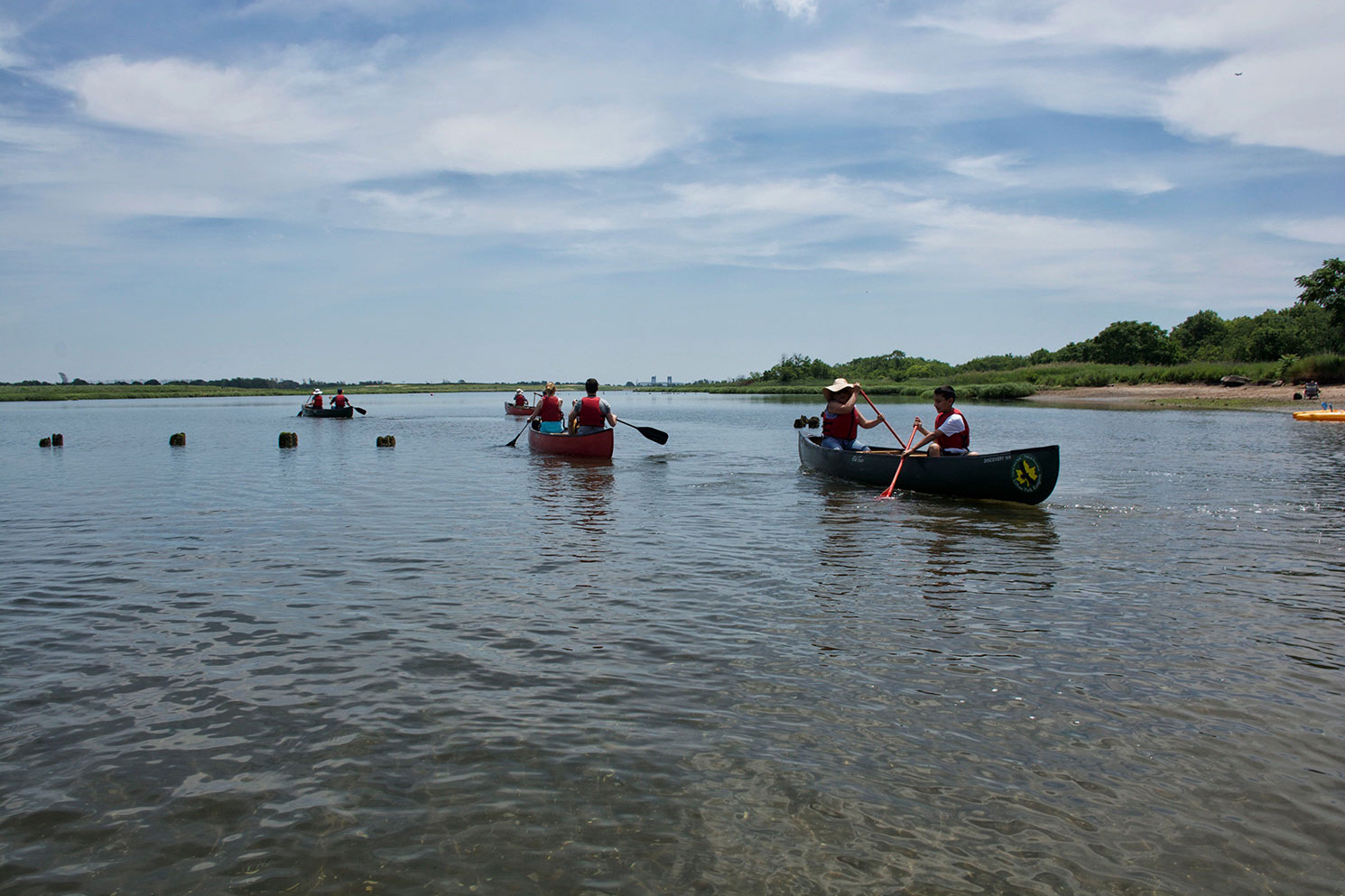
Although the White Island is generally closed to the public, our Urban Park Rangers host special trips by canoe to the island each summer. Please keep checking our Urban Park Rangers' Events page for a chance to join us on the island. You can also get a peek of White Island from our nature trails in Marine Park!
Visit our Hiking Trails Map of Marine Park to plan your visit
Watch a Tour of White Island
While you wait to visit Marine Park's fantastic nature sanctuary, enjoy this special inside look at the beauty of the island and the work we're doing to make it a thriving habitat for wildlife.
Explore New York City's Grasslands and Other Ecosystems
New York City is more than skyscrapers and trees. Discover acres of grasslands tucked away in our parks.
Grasslands in New York City
Learn about the importance of grasslands and how they contribute to supporting the health and beauty of our city.
Watch: Oakland Lake Wildflower Meadow
Explore how we transformed this meadow into a pollinator paradise in Queens with help from volunteers!
Ecosystems in New York City
Along with grasslands, forests and wetlands play an essential role in the biodiversity and resilience of our city.




